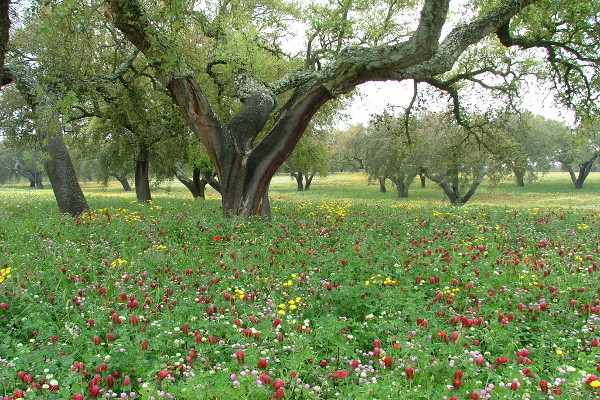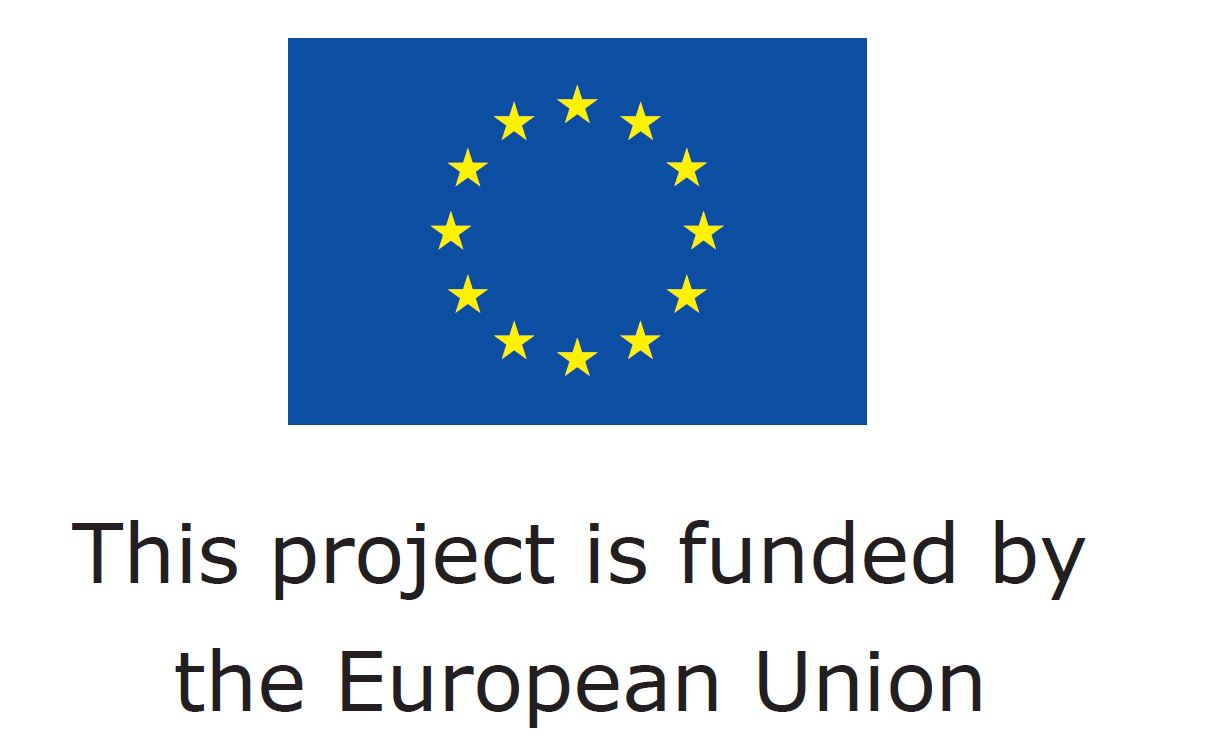
Montados (or dehesas in Spanish) are traditional wood-pasture systems with a savanna type structure, characteristic of the Mediterranean Basin [1, 2]. In Portugal, Montados are mainly distributed in the southern half of the country where the climate is Mediterranean. Annual average precipitation is 600 mm and mean annual temperature is 15ºC (but there is large variation within the area of distribution of Montado).
Cork oaks (Quercus suber) and holm oaks (Q. rotundifolia) are the dominant trees, forming pure or mix stands, with holm oak being dominant in drier regions. Montados are listed under the EU Habitats Directive (habitat 6310), and are key habitats of Special Areas of Conservation (Habitats Directive) and of Special Protection Areas (Birds Directive), which are part of the Natura 2000 network. Montados are High Natural Value farmland [3], their multifunctional management promotes structural diversity at the stand and landscape level, which combined to a large distribution area and spatial continuity results in high-levels of biodiversity [1, 2]. Accordingly, several endemic and protected species of flora and fauna are found in Montados. Finally, cork oaks and holm oaks are protected by the Portuguese law. In 2011, cork oak was designated Portugal's National Tree due to its cultural, ecological and economic value.
Cork is the most important forest product from Montado systems, with Portugal producing 54% of the world cork [1]. In addition to cork (harvested every 9-12 years), animal production in pastures and agriculture also provide a source of income [2]. The regulation of water and nutrient cycles and of soil erosion are important regulating services to be managed in Montados [4]. From a cultural and recreational perspective, Montados are valued for the landscape aesthetics, natural values and cultural heritage [1].
Being traditional socio-ecological systems, Montados depend on human intervention to maintain the structural features that promote habitat diversity and biotic community richness [1, 2]. However, the same activities that enable multifunctional use and biodiversity conservation (e.g., livestock grazing) can become a threat if poorly managed [4, 5]. Today main threats are: the higher frequency and duration of water stress periods, soil degradation caused by overgrazing and tillage (for purposes of crop seeding and shrub control), increased tree vulnerability to pests and diseases, low tree recruitment for stand regeneration, and increased fire risk due to warmer summer temperatures [1, 6]. More specifically, declining trends in stand density, caused by adult tree mortality and the lack of recruitment, are alarming and may lead to an eventual loss of Montados and their replacement by shrubland [6].
Responses to threats include the correct management of soil, grazing, and ecosystem structure (both horizontal and vertical structure). Management practices that protect and restore soil condition are central to improve tree’s condition and resilience to other threats. Concurrently, measures to assist tree recruitment are needed to ensure the regeneration and persistence of Montados in the long-term. Ecosystem structure affects both ecosystem functions and habitat quality for biodiversity; management measures may show synergies or trade-offs depending on their goal. Understanding these interactions will be required to improve management effectiveness. Moreover, economic incentives could help engage private landowners into sustainable practices. For instance, a system of payments for carbon sequestration fostered the implementation of sown biodiverse pastures in over 1000 farms (ca. 50.000 ha), with expected improvements in pasture yield and quality, soil fertility and structure [7].
[1] Pinto-Correia et al. (2011) Agroforest Syst 82:99–104
[2] Bugalho et al. (2011) Front Ecol Environ 9: 278-286.
[3] Plieninger et al. (2015) Biol Conserv 190: 70–79
[4] Pinto-Correia & Mascarenhas (1999) Landscape and Urban Plan 46: 125-131
[5] Almeida et al. (2015) Agroforest Syst
[6] Acácio & Holmgren (2014) Annals of Forest Science 71:5–13
[7] Teixeira et al. (2015) Ecological Engineering 77: 85–97
Table of ecosystem services/functions and available data


